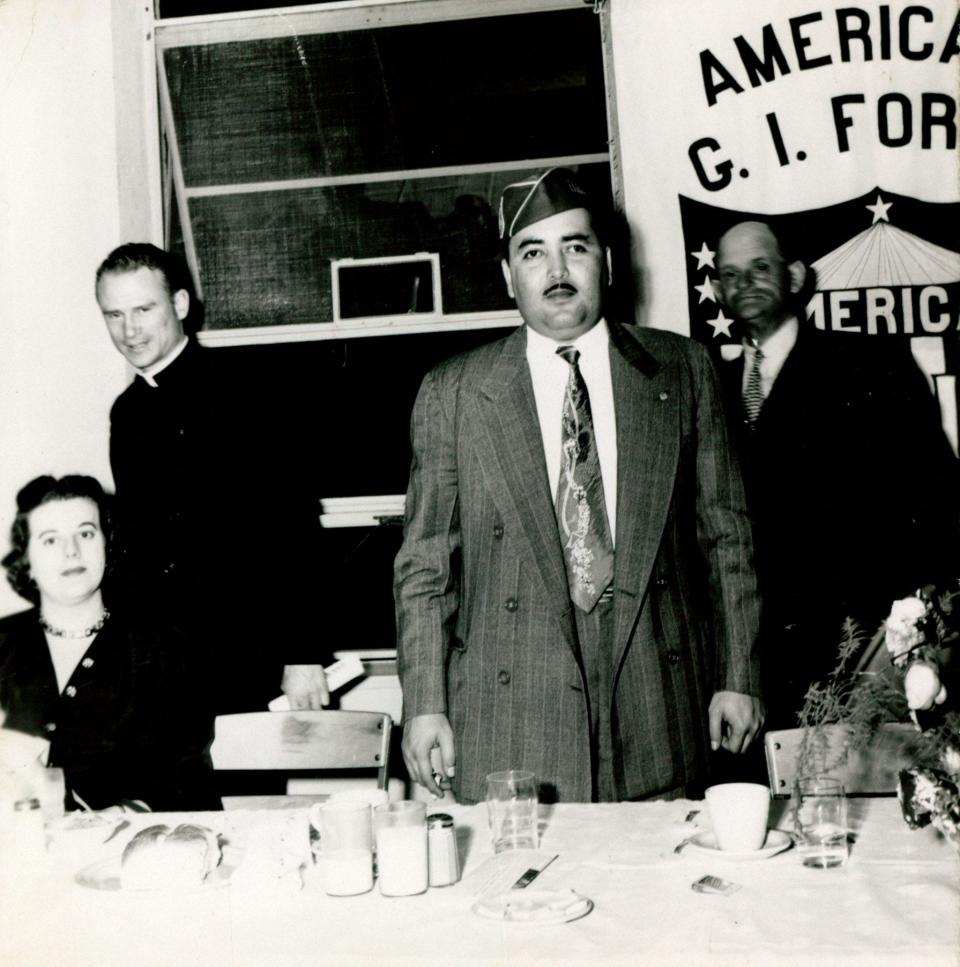Meet Nicasio Idar, the father of Jovita Idar and a pioneering Texas newspaper owner
- Oops!Something went wrong.Please try again later.
In the series "Remembering South Texas activists," the Caller-Times has highlighted South Texas Hispanics who have broken glass ceilings in history and whose contributions to civil rights are still seen today. This is the third of three installments.
Historians say a Mexican American newspaper editor, writer and publisher harnessed his knowledge to help his newspaper become a voice advocating for and bringing awareness to equal rights for the Mexican American population.
Nicasio Idar became owner and editor of ‘La Cronica,’ in 1910. Under his leadership the paper focused on issues the Mexico-Texano people were facing, including political, social, economic and educational matters. La Cronica promoted the intellectual development and civil rights of Hispanics, running poetry, editorials against bigotry and promotions of civil leagues, according to the Texas State Historical Association.
He was born in Point Isabel, Texas, in 1855. Idar, went to school in Corpus Christi then moved to Laredo in 1880. He and his wife had eight children, three of whom were involved in the publication of the paper, making the enterprise a family business.
His daughter Jovita Idar, much like her father was a journalist and a well-known political activist championing the rights of Mexican Americans. His son Eduardo Idar was a journalist and civil-rights activist who served in the American G.I. Forum and was integral to the formation of LULAC.
Nicasio Idar's three main writing points were education, organization of Mexican Americans and civil rights.
Idar was an active in seeking the expansion of civil rights. He went to Washington, D.C. seeking to fight against discrimination, racism and the lynchings that were going on all over Texas, said Manuel Flores professor of Communication and Journalism at Texas A&M Kingsville. “Every time there was a lynching, one of the Idars, especially Jovita (Idar, Nicasio’s daughter) would write about it and try to get that taken care of by the authorities.”
An activist publication with a firm financial base
While other newspapers focused on reporting news, La Cronica was an activist newspaper. Nicasio, his daughter Jovita and his son Eduardo used the paper as a mouthpiece for civil rights, Flores said. It was rare in the 20th century; nobody really spoke about it like the Idars, Flores said.
Flores said this was because of Nicasio's leadership, being the patriarch of the family.
He also wrote about the importance of education for Mexican Americans in rural South Texas, wanting to ensure that the people who lived at the farms in the Valley did not miss out on their education. Idar thought the key to liberty was ultimately education.
In a series that ran in the paper circa 1910 − 1911 called “The Mexican Children of Texas,” he wrote about the separate, segregated schools and neighborhoods of the Mexican American population, portraying the impact education segregation had on Tejano children.
What set La Cronica apart from other papers was that it continued the labor organizing and community organizing that Nicasio was involved in, said Nikolas Kanellos professor in the Hispanic Studies department at University of Houston. Kanellos said the paper became an organ for the movement to create labor unions, especially among railroad workers, cotton field workers and laborers.
There were more than 50 organizations during that time vying to become the number one representative of the Mexican American population, Flores said. They had to unite in order to send a clear message that they wanted civil rights.
Nicasio was a member of those organizations, which he helped organize, and when they met years later, they formed the League of United Latin American Citizens. Idar’s son, Eduardo, wrote most of the principles in the original 1929 LULAC constitution.
“He was a forerunner to LULAC, and his family was integrally involved,” Flores said.
According to the TSHA, La Cronica provided the only in-depth coverage of events affecting the Mexico-Texano community, attacking problems like social discrimination and the complacent attitude of the powerful toward the lynching of Mexican Americans. The paper published for more than 25 years, continuing after his death.
“Probably the most successful and most impactful and influential of the intellectuals reaching people at that time was Nicasio and the Idar family from La Cronica because it was set on a very firm financial basis, whereas some of the other newspapers were short lived,” Kanellos said.
In 1911 Idar and his family organized a conference in Laredo to address racial inequality. The Congreso Mexicanista was the first effort by Mexican Americans to band together throughout the state of Texas to discuss problems such as segregated schools and lack of access to polling sites. It was the first time they organized a big conference to bring people together from Oakland to Texas to discuss the situation, Kanellos said.

“(Idar) becomes a model of community action, community organizing and bringing people together, to create political awareness and to take action,” Kanellos said.
This article originally appeared on Corpus Christi Caller Times: Nicasio Idar was a journalist who fought for Mexican American rights

